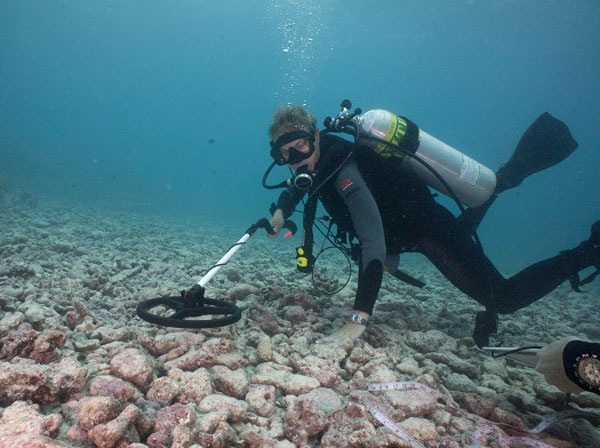[indeed-social-media sm_list=’fb,tw,goo,pt,li’ sm_template=’ism_template_1′ sm_list_align=’horizontal’ sm_display_counts=’true’ sm_display_full_name=’true’ print_total_shares=1 tc_position=’before’ tc_theme=’dark’ ]
Another great way to increase your odds for metal detecting is through underwater metal detecting. Combining both on land and underwater hunting will increase your chances of finding more targets. This hobby is great for the summer because you get to cool off in the nice cool water while hunting!
However, sometimes hunting underwater can be more challenging than on land, and you need to invest in waterproof metal detectors. But with the proper underwater metal detectors and this ultimate guide of underwater detecting tips, you will be set for the best finds!
Contents
Plan Your Trip Well
Planning your trip before taking off is vital to ensure you’re not wasting your time and gas. First of all, there is typically only one great time for underwater metal detecting and that is the summer. Not only does the summer attract many tourists who lose many valuables behind, but also the water is warmer so your body can stay in the water for long amounts of time during your hunt.
But if you really want to hunt during the winter, by all means, no one is stopping you, just wear a wetsuit! So by planning out your trip ahead of time whether it’s planning around the season, weather forecast, and the current, is best to do so before you adventure out.
Where to Hunt
This one of the most important tips for metal detecting; choose the most visited location to increase your odds of finding targets. Specifically for underwater metal detecting, the most productive spots are where heavy amounts of people are.
Choosing swimming holes, popular beach areas, piers, and docks where people jump off of or swim at is the best decision.
Target Recovery Techniques
For underwater detecting, following an imaginary line and moving it with 5 to 6 feet swipes is the best-used technique. Also, keep your eye out for ocean floor pot holes those are always creative places to check out.
One of the most common forms of recovering targets during underwater detecting is using a long steel trowel because they work well with rocky and hard ocean floors. However, for soft sand areas using your hand to fan away the sand and grab the target is perfectly fine!
Know the Water Current
Knowing the water current is very important if you want to find targets easily and quickly. This tip is necessary for when your underwater treasure hunting because the current of the water will show which direction the sand is moving too. This gives you ultimate insight as to where metals can be stuck.
Day Time Hunt
Besides it not being the safest idea, detecting at night is extremely difficult. When you are planning an underwater metal detecting trip, aim for daytime hunting! As adventurous as hunting in the dark may sound, it will be a very successful trip. Daytime hunting is clear and visible so you can have a stronger chance of making out trash from coins.
No Need for Deep Diving
Keep this in mind; underwater metal detecting does not mean diving down in deep water—you don’t need to know how to scuba dive! By searching in four feet or less water you will be able to scoop out a plethora of valuables.
Check out our reviews on some of the top underwater metal detectors suitable for both beginners and the more experienced.
As always
GL & HH
[indeed-social-media sm_list=’fb,tw,goo,pt,li’ sm_template=’ism_template_1′ sm_list_align=’horizontal’ sm_display_counts=’true’ sm_display_full_name=’true’ print_total_shares=1 tc_position=’before’ tc_theme=’dark’ ]

